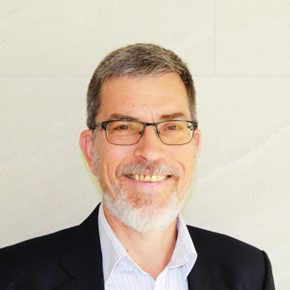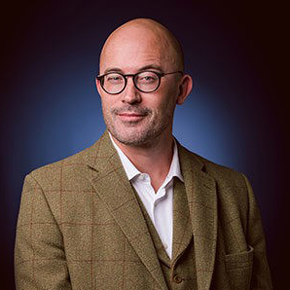
Contribute to the Space and Radio Science newsletter
If you would like to list your event or opportunity, or otherwise contribute to the next edition of the Space and Radio Science newsletter, please send content to icsu@science.org.au. Contributions will be published subject to approval by the National Committee for Space and Radio Science.
Subscribe
The National Committee provides this regular emailed newsletter containing updates from international scientific unions and committees and news related to the local scientific community, relevant funding opportunities, conferences and awards.

Emeritus Professor Frederick Menk
It has been a privilege to chair the National Committee for Space and Radio Science during a time when the landscape has changed rapidly. However, Australia has not yet worked out its objectives for both of these domains. Space and radio science underpin much technology which everybody uses. Exciting discoveries also await fundamental ‘blue sky’ research. There can be terrific opportunities if we overcome the challenges of limited imagination.
In my view, key priorities for our disciplines are:
Below I highlight four examples of science themes to which Australia can make important contributions.
Achieving such goals requires cross-institutional collaboration and a national appetite to realise needs, opportunities and leadership in these rapidly growing domains.
The Academy and the National Committee for Space and Radio Science thank Fred for his generous service over a decade as a member and chair of the National Committee and his work as a champion of the space sciences in Australia.

The Committee has been developing an implementation plan to accompany the decadal plan for space science that was launched in January 2022. The intention is for the implementation plan to outline key goals, strategies and responsibilities for realising the recommendations in the decadal plan. This process is being informed by community and stakeholder consultation.
The Committee welcomes Professor Phil Bland as the new chair. Phil Bland joined Curtin University as an ARC Laureate Fellow in 2012. Prior to this he was Director of the Impacts and Astro materials Research Centre at Imperial College London.
Phil has research interests in several distinct areas in planetary science: using primitive meteorites to explore the origin and early evolution of the solar system, understanding asteroid and cometary impacts, and the impact rate.
The Australian Academy of Science welcomes the Albanese Government’s ongoing support for science and research in the 2023–24 Federal Budget.
This is a ‘business as usual’ budget for science, continuing to invest in Australian universities, science agencies, national research infrastructure, training scientists, supporting business research and development (R&D) and the broader science system.
Australian Academy of Science President Professor Chennupati Jagadish said despite this spending, Australia’s overall investment in science remains lamentable.
You can explore the Academy’s interactive data report of the Australian Government’s science and research expenditure, and read more Academy analysis on the budget.
The Australian Academy of Science made a submission to the Department of Industry, Science and Resources consultation on developing Australia’s science and research priorities and national science statement. The submission focuses on the strategic context and requirements of the National Science and Research Priorities and draws on discipline-specific sector analysis drawn from the National Committees for Science.
The National Committee for Space and Radio Science identified key challenges in:
Read the Academy’s submission.
Dr Lily Qiao—WiSC President
The new Executive Committee of the Women in Space Chapter (WiSC) of the National Space Society of Australia would like to extend our warmest greetings. Our team consists of Dr Lily Qiao from the University of New South Wales, Canberra, serving as President; Ms Sarah Fitzjohn, operations manager at Saber Astronautics, as Secretary; and Ms Nahid Alemi Kermani, a space system engineer, as Treasurer.
Established in 2018, WiSC aims to promote and encourage gender equality within the Australian space sector, with over 100 members from various sectors nationwide, including business, academia, government and more. We strive to create a warm and inviting community for all members, promoting interaction through various channels. To this end, we introduced two new sections in our monthly newsletter: the ‘members of the month’ allows members to introduce themselves to others, while ‘WiSCer evolves’ serves as a platform to promote your events, social activities, job and education prospects, and other updates.
We invite you to register for WiSC membership and receive our newsletter. We also welcome you to join the WiSC LinkedIn group to stay up-to-date with our community’s latest news and developments. We like Twitter too: @WiSC_Aus. We would like to hear from you, so feel free to reach out at wisc@nssa.com.au.

CSIRO and SmartSat have announced $83 million in funding to design and develop Aqua Watch, a new mission to deliver world-first ground-to-space water weather quality monitoring for Australia and the globe.
Using an extensive network of Earth observation satellites and ground-based water sensors, it will support better water quality management, with early warning of harmful events such as toxic algal blooms, blackwater and runoff contamination.
The ISI-India program grants scheme is open for applications until 13 June 2023. With a total funding pool of $20.29 million over 2023–26, the scheme targets joint Australia–India space projects which will collaboratively strengthen space capability across both countries in mutual priority areas.
Committee on Space Research (COSPAR)
Australian representative: Professor Michael Ireland
Like many organisations built around in-person international travel, COSPAR had a challenging time during COVID. However, the major assembly in Athens was successfully run mostly in-person. A theme emerging is recognition that a major global challenge the space community should work on is climate change, and that the space science community can do more about supporting diversity. Hopefully the 2024 meeting in Busan, Korea, will be even more accessible for Australian attendees.
Scientific Committee on Solar-Terrestrial Physics (SCOSTEP)
Australian representative: Associate Professor David Pontin
SCOSTEP is a thematic body of the International Science Council (ISC) with long-term objectives that include promoting international interdisciplinary programs in solar-terrestrial physics. There will be both a General Council Meeting and a Bureau Meeting of SCOSTEP at the IUGG in Berlin in July.
SCOSTEP runs a Visiting Scholar program to provide training to graduate students in well-established solar terrestrial physics laboratories and institutions, for periods of between one and three months. The program is open to applicants from all countries but with an emphasis on applicants from developing countries. The program is open to current masters and PhD students. While the 2023 outcomes have been announced, another closing deadline is expected early in 2024.
The latest issue of the SCOSTEP newsletter contains articles on space-weather science and instrumentation advances from around the world, as well as highlights on young scientists and meeting reports.
SCOSTEP/PRESTO hosts an online lecture series, with the most recent lecture was given by Dr Annika Seppala of the University of Otago (New Zealand) on 19 April. These lectures cover a range of topics in solar-terrestrial physics; see details including recordings of the lectures.
URSI Union Radio-Scientifique Internationale / International Union of Radio Science
Australian representatives: Dr Trevor James Harris
The International Union of Radio Science (Union Radio-Scientifique Internationale) is a non-governmental and non-profit organisation under the International Council for Science, and is responsible for stimulating and co-ordinating, on an international basis, studies, research, applications, scientific exchange and communication in the fields of radio science.
Under URSI there are several commissions, or focus groups. Commission-G deals with the study of the ionosphere in order to provide the broad understanding necessary to support space and ground-based radio systems. The commission interacts with other commissions but particularly: C (radio communication systems and signal processing); F (wave propagation and remote sensing); H (waves in plasmas); and J (radio astronomy).
There are several working groups under the commission that cover finer detailed interests. More about the working groups (see Working Groups tab).
The scientific program covers the areas of URSI Commissions A to K and comprises oral/poster sessions with invited and contributed papers, commission tutorials, general and public lectures and workshops and short courses. Over 1,600 abstracts have now been received and a very full program is planned.
Further updates to the program and other information is available on the event page.
Professor Anatoly Rozenfeld
Exposure to space radiation exposure has significant biological consequences for astronauts on deep space missions. The estimated whole-body dose for a three-year Mars mission is 1,200 mSv; compare this to the annual Australian occupational limit for radiation exposure of 20 mSv.
Space radiation also impacts microelectronic devices, causing single event upsets, latch-ups, electrical discharges, total ionizing dose and displacement damage.
The Centre for Medical Radiation Physics (CMRP) within the School of Physics at the University of Wollongong is developing, with ARC support, a comprehensive space radiation monitoring system (SRAMS) to evaluate the radiation hazard on astronauts and space electronics in real time. SRAMS is based on a set of semiconductor radiation detectors developed at CMRP with different configurations and operational principles. These include:
Joint experiments with NASA at the HIMAC facility in Japan demonstrate that SRAMS’ SOI micro dosimeters compare well in accuracy but are more convenient to use than the Timepix hybrid pixel detector developed at CERN (Geneva) which is currently used for crew radiation protection on the International Space Station. Construction of the first laboratory prototype of an SRAM micro dosimetry module is underway with support from ESA, SINTEF (Norway) and the University of Athens. Development of SOI micro dosimetry detector technology for space medicine applications has been previously supported at Wollongong University by the US Naval Academy, the Memorial Sloan Kettering Cancer Center in New York, and NASA.
The CMRP ran the School of Space Qualification in early 2023, with another school planned for February 2024 in Mooloolaba, Queensland.
Editorial note: Distinguished Professor Anatoly Rozenfeld received the 2022 Premier’s Research Award for Outstanding Cancer Researcher of the Year. He is founder and Director of the Centre for Medical Radiation Physics, has published over 400 articles, five book chapters, holds 19 patents, and has attracted more than $18 million in competitive grants. His career began in Ukraine, applying his knowledge of radiation physics at Chernobyl following the nuclear disaster. He has dedicated his life to improving outcomes for people diagnosed with cancer, motivated by the death of his mother from a brain tumour when he was just ten years old. For more information on health risks from long duration space missions see Patel, Z.S., Brunstetter, T.J., Tarver, W.J. et al. Red risks for a journey to the red planet: The highest priority human health risks for a mission to Mars. npj Microgravity 6, 33 (2020).
© 2025 Australian Academy of Science